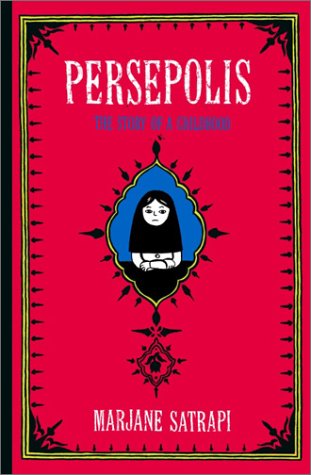Marjane Satrapi’s Persepolis
 I just finished reading Marjane Satrapi’s graphic novel/memoir Persepolis. Already a best-seller in France, where it first appeared, the book has recently been published in the States. Satrapi is the great-granddaughter of the emperor of Iran, who was overthrown by Reza Shah in what at first was a bid to create a republic but in the end simply ushered in the Pahlavi dynasty. The book tells the story of Marjane (or Marji) who is 10 years old at the time of the 1979 revolution in Iran, and chronicles the next four years of her life, up until the moment when her parents, fearing for her future, send her off alone to Austria to stay with a friend of theirs.
I just finished reading Marjane Satrapi’s graphic novel/memoir Persepolis. Already a best-seller in France, where it first appeared, the book has recently been published in the States. Satrapi is the great-granddaughter of the emperor of Iran, who was overthrown by Reza Shah in what at first was a bid to create a republic but in the end simply ushered in the Pahlavi dynasty. The book tells the story of Marjane (or Marji) who is 10 years old at the time of the 1979 revolution in Iran, and chronicles the next four years of her life, up until the moment when her parents, fearing for her future, send her off alone to Austria to stay with a friend of theirs.
Unlike many Iranians who fled in 1979, Satrapi has no romantic nostalgia for the reign of the Shah of Iran, and rightly so. The Shah was a brutal dictator who lived it up while the people suffered. But she is also disappointed in the revolution that followed. Although the opening chapter on the veil is overly simplistic (a panel shows two groups of women, one chanting “the veil” and the other chanting “freedom”), Satrapi has a keen eye for how the fundamentalists changed people around her (there is a scene of kids who brag about how many times a day they pray.) There are many poignant scenes in this book (Marji’s dialogues with God are one example, the yellow plastic keys to heaven is another.) The story is gripping, the dialogue is sharp, and the charcters are well observed. Like Maus or Palestine, Persepolis is a landmark. A must for anyone who wants to understand modern-day Iran.